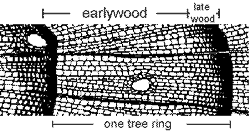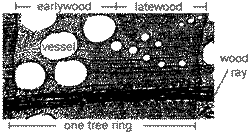About Tree Rings
What is Dendrochronology?
- Dendrochronology is the dating and study of annual rings in trees.
- The word comes from these roots:
- ology = the study of
- chronos = time; more specifically, events and processes in the past
- dendros = using trees; more specifically, the growth rings of trees
- Dendrochronologist
- a scientist who uses tree rings to answer questions about the natural world and the place of humans in its functioning
What do Tree Rings Tell Us?
The practical applications of the study of tree rings are numerous. Dendrochronology is an interdisciplinary science, and its theory and techniques can be applied to many applications. See our subdisciplines for examples. These research interests have in common the following objectives:
- to put the present in proper historical context
- to better understand current environmental processes and conditions
- to improve understanding of possible future environmental issues
Why Not Just Count the Rings?
Ring-counting does not ensure the accurate dating of each individual ring. Numerous studies illustrate how ring-counting leads to incorrect conclusions drawn from inaccurate dating. Dendrochronologists demand the assignment of a single calendar year to a single ring. Various techniques are used to CROSSDATE wood samples to assure accurate dating.
Dating Method: Crossdating by Skeleton Plotting
The SKELETON PLOT is one method of crossdating tree rings. We at the LTRR use this method most often. To summarize:
|
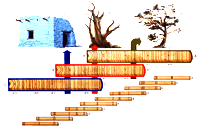 |
|
 |
Basics of Ring Formation
Understanding these concepts will help you succeed at this website's skeleton plotting and crossdating exercises. This page does not attempt to cover the details of wood formation that make tree rings possible, but rather provides an overview of common wood characteristics and anomalies that you will need to identify when you are crossdating.
Conifer Tree Ring
|
(transverse or cross-sectional view) |
Angiosperm Tree Ring
|
(transverse or cross-sectional view) |
Ring Width Variation
This picture of a conifer wood sample shows . The rings display much variation:
|
 |
Variation in these rings is due to variation in environmental conditions when they were formed. Thus, studying this variation leads to improved understanding of past environmental conditions and is the basis for many research applications of dendrochronology.
A key distinction of dendrochronology is that all trees rings being analyzed are dated to their correct year of formation. At first glance, it appears easy to date tree rings by just counting them, but reality is often more complicated than that.
Locally Absent Rings
|
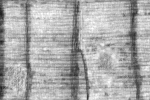 |
False Bands/Rings
|
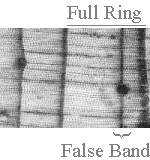 |


